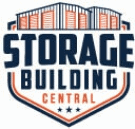Self-Storage is not an industry commonly thought of as a rapidly expanding segment of the economy. How many times, beyond your own needs, has the topic come up in conversation? As a society, we love the idea of self-storage. Your own space for things to be stored away, somewhere off where we don’t readily see or need to deal with it.
One in ten households in America own storage space, and if their impact on the economy is any indication, self-storage has all the earmarks of a growth industry. With 20 years in the market, Storage Building Central has been at the forefront of self-storage and a driving force behind the industry’s growth. The self-storage buildings industry has generated more than $39.5 billion in revenue in 2019. To understand how this industry grew so large, perhaps a brief look at its history may explain its popularity.
A Brief History Of The Industry
The concept of self-storage facilities dates as far back as over 6,000 years ago in Ancient China. However, the British later popularized storing crates in warehouses and having them under guard in the 18th and 19th centuries. In 1891, the Bekins brothers founded a company with only three horse-drawn vans and 12 employees in Omaha, which was essentially the first moving company in America. After the Second World War, the company expanded to other moving industry services, including self-storage.
As the populous continued to grow, so too did the need to store their belongings.
A Sector On The Rise
Currently, storage buildings take up approximately 2.47 billion square feet, which is about three times the size of the island of Manhattan. The industry has grown over 50% in the last decade alone, with impressive year-on-year growth. One might wonder why it’s suddenly seeing an uprise, rather than simply being a staple service. Let’s take a look at some essential statistics and information to find out.
The Key is the Consumer
Simply put, it’s ultimately all about the individual consumer. According to a 2013 Self-Storage Demand Study, 10.8 million households confirmed that though they had an attached garage at home, they also have a storage facility. Moreover, the same study indicated that the number of people who used a storage facility planned to keep using it for longer periods than before.
Third Generation: Convenience is Everything
The rise of third-generation storage facilities has increased significantly in recent years. You probably have early memories of driving out to your family’s storage space, likely somewhere off-site that felt closer to Area 51 than anywhere you lived. In recent years, third-generation storage facilities have begun springing up in more populous, urban areas. No longer do you have to drive out to the middle of nowhere to visit your possessions.
Presenting Your Newest Storage Architect: Frank Lloyd Wright
Newer facilities in better locations come with an improvement in appearance. Having an old facility in the center of town is not ideal for anyone. As a result, architects and contractors have worked to make more attractive storage facilities, complete with visitors’ amenities. The building’s exterior is no longer simple and basic, but rather designs opt for the same dynamic look as surrounding buildings. Today’s facilities look more like hotels for your belongings rather than a row of high school lockers like before.
Security is Everything
Today’s storage facilities offer the best security while not sacrificing ease of access for renters. Most modern storage building have keypad access, camera surveillance, and even climate control. The ease of access is even increased tenfold in locations with drive-in loading bays that make moving go much more smoothly.
Repurposing Phantom Offices
There’s no shortage of vacant office spaces in towns all across America. Today, these former blights on the wrong side of the tracks are being repurposed into attractive storage facilities. The wounded economy will undoubtedly mean renters will be seeking cheap, easy-to-access space for items they can no longer house. According to Storage Beat, an estimated 10% of the projected 500 to 750 new facilities this year will be converted from phantom office buildings.
Working in Conjunction with Governments
One aspect unique to the industry is that it’s not required with any frequency, so attracting prospective clients can be challenging. As a result, some initiatives have been taken to make self-storage facilities more accessible and appealing to city dwellers. One such movement in Charlotte, North Carolina, allows for self-storage buildings in urban areas so long as half of the site’s ground floor was committed to retail and office space, helping the property remain as essential as any other business.
Self-Storage: You Need It Too
The self-storage buildings of today aren’t the same as your grandfather’s self-storage facility, not even your fathers. With upgrades in security and a focus on appealing to the urbanite, the self-storage industry is one of the least talked about, but easily one of the rapidly-expanding business models in America. Even cities themselves have seen the value of developing new, urban-focused, and architecturally-hip storage buildings, propping them up with initiatives to blend them seamlessly with the rest of the surrounding infrastructure.
If you’re looking to free up some space in your living area or need an upgrade to any of your facilities, contact Storage Building Central today at +1 (844) 315-3151. With over 20 years of storage expertise, we have the perfect solution for all of your self-storage needs.


